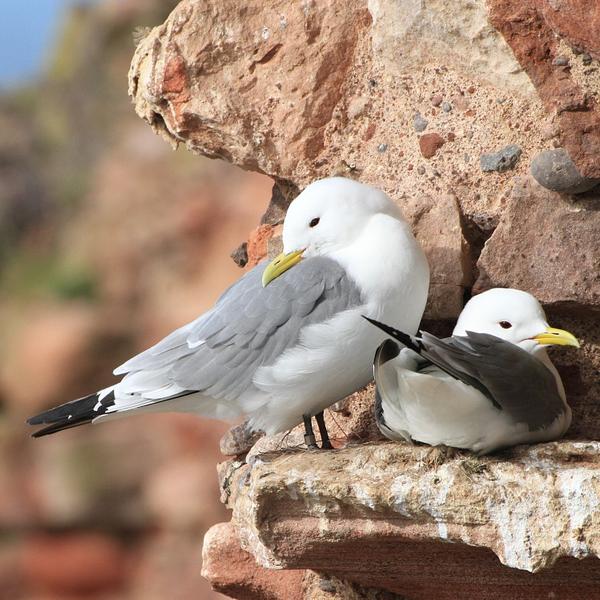_Jamie_McDermaid.jpg)
Living with Urban Gulls: Reflections from the Scottish Gull Summit
By Emily Burton, Senior Conservation Officer
This week I attended the Scottish Gull Summit in Inverness - a gathering hosted by NatureScot to share experiences of living alongside urban gulls and to explore what more could be done to address the challenges that can arise.
At the Scottish Seabird Centre, we welcome this discussion as an important step towards shaping a new approach that provides clarity, compassion, and practical help. We’re grateful to everyone who took part and shared their thoughts and stories, and we hope that many more voices and communities across Scotland will contribute to this conversation in the future.

Gulls are an iconic part of Scotland’s coastal identity, and I love working with these intelligent and charismatic species out on the Forth islands and along our coastline. However, when it comes to public opinion, they are often the underdogs. I spend much of my time trying to open people’s eyes to the incredible gull species we host here in Scotland, from seafaring kittiwakes to eye-catching black-headed gulls, and impressive great black-backed gulls to name a few.
People are often surprised to learn that this group of birds (which are often all just referred to as ‘seagulls’), are in steep and worrying decline. Herring gulls, which are often the species that people are most familiar with, have declined by nearly 50% since the 1980’s. Like other seabirds, gulls are facing mounting threats from the climate crisis, invasive species, unsustainable fishing and marine development.
_Jamie_McDermaid.jpg)
However, living alongside them in our towns, cities, playgrounds, and rooftops can sometimes lead to friction. The summit provided an opportunity to hear these perspectives and to begin charting a way forward together.
For me, the most important reflections from the summit were:
- We need to hear people’s concerns about gulls in their communities with respect and openness. Without fully acknowledging these experiences, we cannot begin to address them.
- Sustainable, long-term solutions will often be simple and unglamorous - they may even seem trivial at first. But unless we deal with the reasons gulls and people are drawn into the same spaces, we risk relying on short-term fixes that are costly and ineffective. Ultimately, clean towns and cities where food is not freely available for gulls minimises the risk of conflict.
- Local authorities, businesses, and individuals need consistent and clear advice on tried and tested, effective solutions for living alongside gulls, together with information about where funding can be found to support them.
_Jamie_McDermaid.jpg)
If we genuinely want to reduce conflict and create healthier spaces for both people and seabirds, communities must be at the heart of the process. Many of the best tools available to us rely on local engagement to ensure that measures are targeted and effective. And crucially, they must be properly resourced, so that people can see and feel the benefits of positive change rather than frustration when their concerns go unanswered.
_Greg_MacVean_(6).jpg)
I left the conference feeling hopeful. I’d had thoughtful, constructive conversations with people who clearly care about both wildlife and about their communities. My hope is that these discussions continue - and most importantly, that they lead to positive, practical changes.
Far from dividing us, if taken seriously by our decision makers, the challenge of living alongside urban gulls has the potential to bring people together - to put in place solutions that will work for people and nature, while raising vital awareness about the broader challenges facing our struggling seabirds.
